13 of the oldest archaeological sites in the Americas
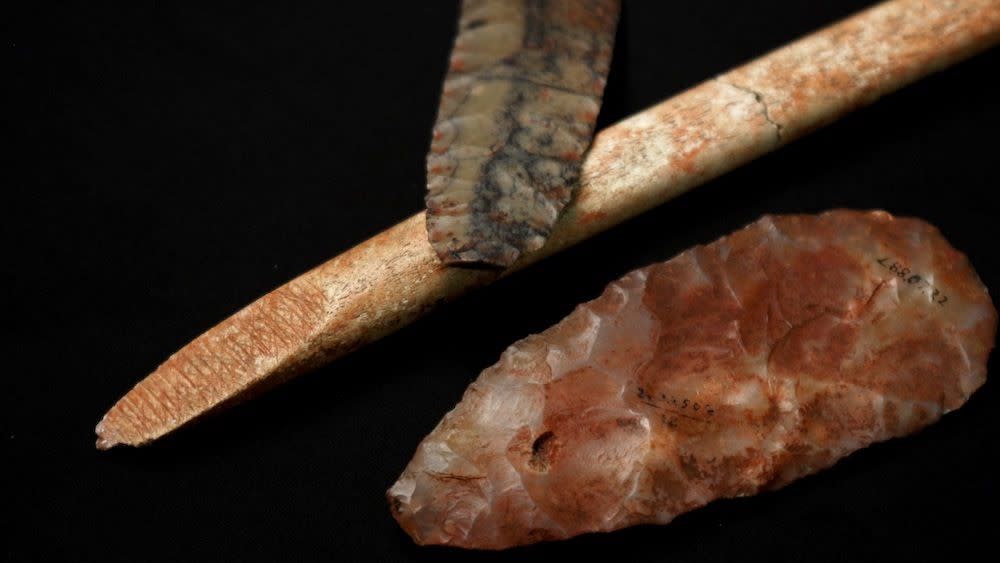
Archaeological discoveries across the Americas have shaped our understanding of when and how humans first reached the so-called New World. The story told by artifacts unearthed from sites all the way from Alaska to Chile is hotly debated.
According to the Clovis First theory, people crossed from Siberia into North America just over 13,000 years ago via the Bering Land Bridge — a mass of land that emerged when the last ice age lowered sea levels — and spread across the Americas.
But in recent decades, archaeologists have unearthed much earlier evidence of people across North and South America, pushing back the date for this milestone in human history and casting doubt on how the first Americans got there.
From giant sloth bones carved into pendants to underwater caches of mastodon bones, here are 13 of the oldest archaeological sites in the Americas.
1. Clovis, New Mexico

Close to a ravine called Blackwater Draw in eastern New Mexico sits an archaeological site, discovered in 1929, that has shaped our understanding of how the Americas were peopled.
The site was called Clovis due to its proximity to a town of that name and, throughout the 1930s, yielded stone artifacts, hearths and bones belonging to extinct animals — including mammoths — showing evidence of butchery dating to 13,000 years ago.
Spearpoints discovered in Clovis have come to define a group of people who were long believed to be the first humans to arrive in the Americas, as well as their culture. These distinctive spearpoints were chipped from stone into finger-long projectiles that are now known as "Clovis points" and were found associated with animal bones.
Ancient archaeological sites across the Americas are defined in relation to Clovis, with "pre-Clovis" sites referring to evidence that humans came from Asia far earlier than 13,000 years ago.
2. Swan Point, Alaska
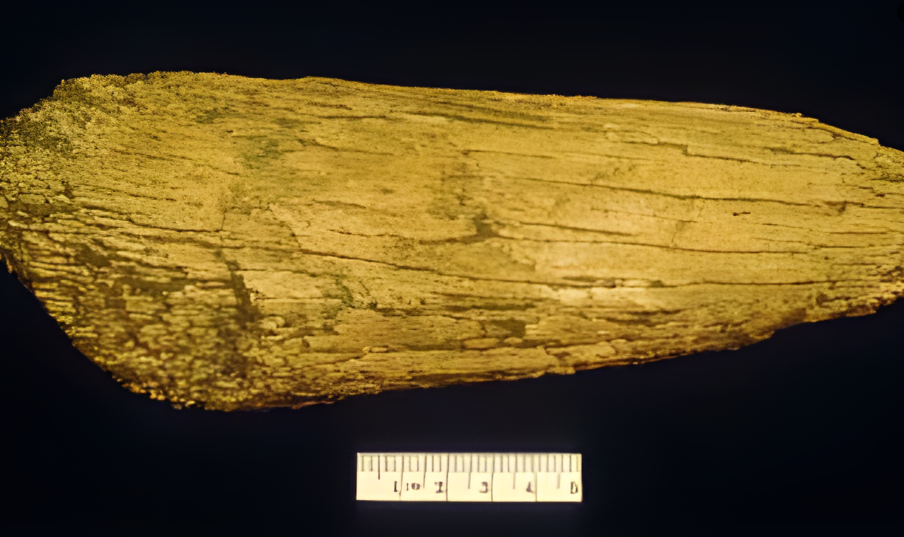
Swan Point is located in east-central Alaska and is the oldest known archaeological site in the state, as well as the only site in Alaska showing evidence of humans hunting mammoths. Excavations have uncovered evidence of human occupation — such as hearths, tools and animal bones — dating to more than 14,000 years ago.
Based on what has been recovered from the hilltop site, archaeologists think early occupants may have camped there and survived by hunting game in the surrounding wetlands, now known as the Shaw Creek Flats.
Tools discovered at Swan Point include projectile points made of stone and antlers, fragments of an adze for chopping wood or bone, scrapers for skinning and an awl to pierce animal hides. These objects, together with a mammoth tusk, suggest the site may have been a mammoth ivory workshop at some point in prehistory.
3. Cooper's Ferry, Idaho
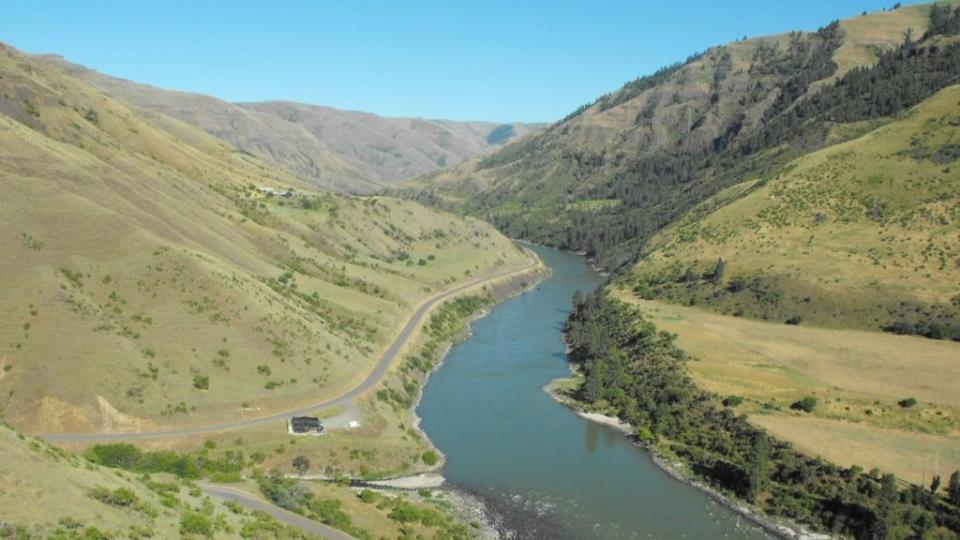
Cooper's Ferry is a prehistoric settlement at the confluence of Rock Creek and the lower Salmon River in western Idaho. Between 2009 and 2018, archaeologists unearthed 189 artifacts that indicate the site was occupied by humans between 16,000 and 15,000 years ago — including a hearth pit, animal bones, chunks of charcoal, stone tools and flakes of rock shaved off during the toolmaking process.
The site also contained dozens of spearpoints and blades carved out of stone, as well as tooth fragments from an extinct species of horse. The spearpoints are pinkie-sized and unfluted (meaning it's not grooved or ridged), which is typical of a weapon-making tradition known as the western stemmed point tradition, which is distinct from the Clovis point tradition.
4. Paisley Caves, Oregon
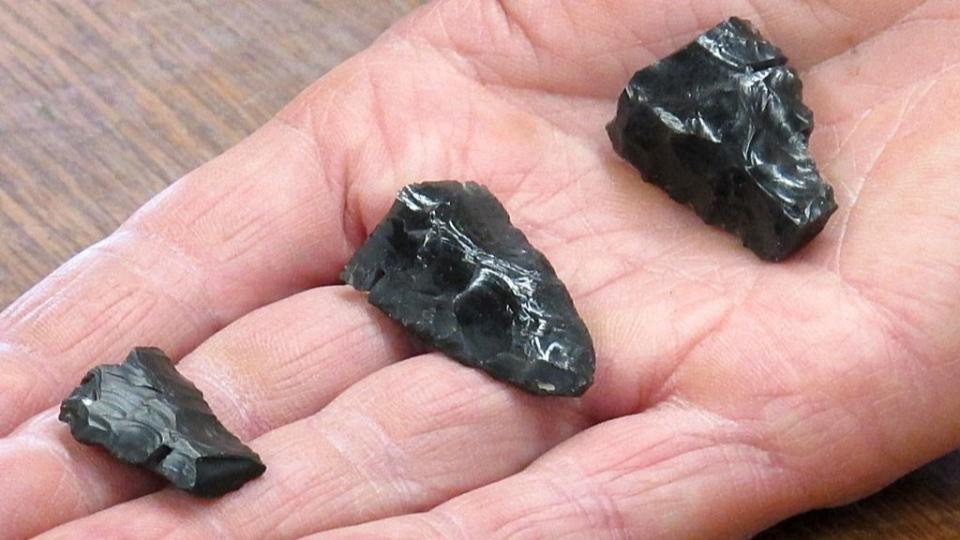
The Paisley Caves are a network of eight caves and rock shelters in the Summer Lake Basin, in south-central Oregon. They were carved out by the waters of an ancient lake — Lake Chewaucan — which has since dried up.
Archaeologists first excavated the caves in the late 1930s, revealing fragments of obsidian and bone tools, animal bones, wooden artifacts and baskets.
More recent studies of the caves have also found and analyzed human coprolites, or fossilized feces, which enabled archaeologists to pinpoint human occupation to 14,500 years ago. The age of the fossilized poop, along with the discovery of a serrated bone tool, suggests that pre-Clovis humans occupied the caves. The desiccated poop also made it possible to reconstruct these early occupants' diet, which partly consisted of grasses, large birds and now-extinct giant bison.
5. Page-Ladson, Florida
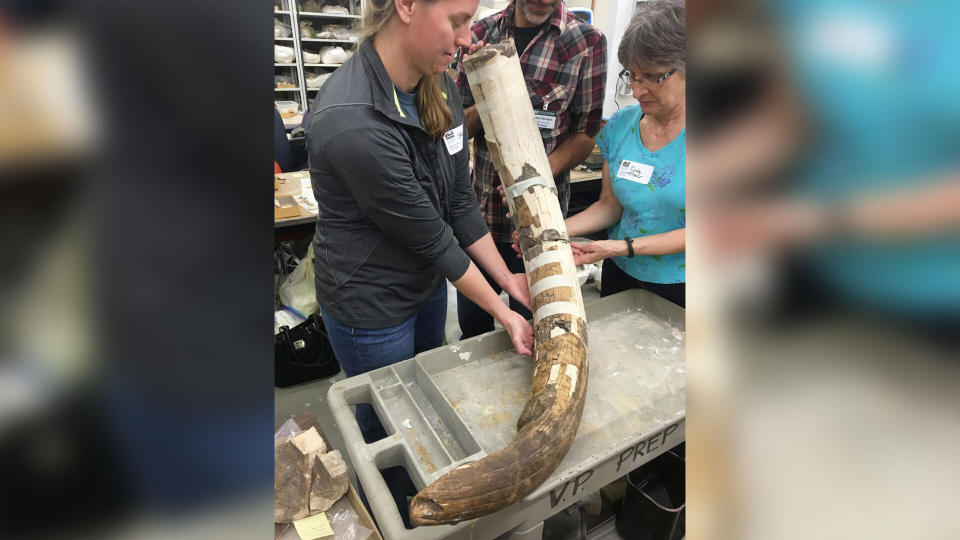
Page-Ladson is an underwater archaeological site located at the bottom of a 30-foot-deep (9 meters) sinkhole in the Aucilla River, in northern Florida. A former Navy SEAL accidentally discovered the site while scuba diving in the early 1980s, when he spotted bones belonging to an extinct species of proboscidean.
Since then, archaeologists have uncovered stone tools and the remains of other extinct animals — including prehistoric camels, bison and mastodon — that date to 14,550 years ago. A mastodon tusk unearthed at the site bears cut marks that were probably made by humans, although it is unknown whether they butchered the animal or scavenged its remains.
6. Monte Verde II, Chile
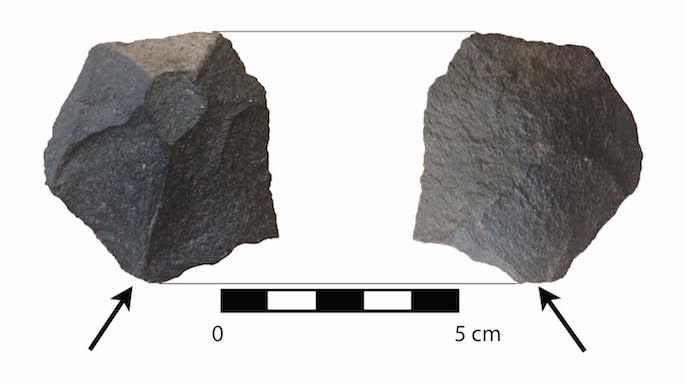
Monte Verde II is one of four excavated areas in the Monte Verde archaeological complex, located near Puerto Montt, in the Los Lagos region of southern Chile. A study published earlier this year dates artifacts and structures unearthed at Monte Verde II to 14,550 years ago.
The site contains the ruins of a 60-foot-long (18 m) wood frame that may have supported a tent-like structure, as well as wooden artifacts, stone tools, hearths, food remains and animal bones — including those of half a dozen mastodon. Inside the wood frame, archaeologists discovered hundreds of microscopic flecks of hide tissue embedded in the ground, suggesting the floor was covered with animal skins.
7. White Sands, New Mexico
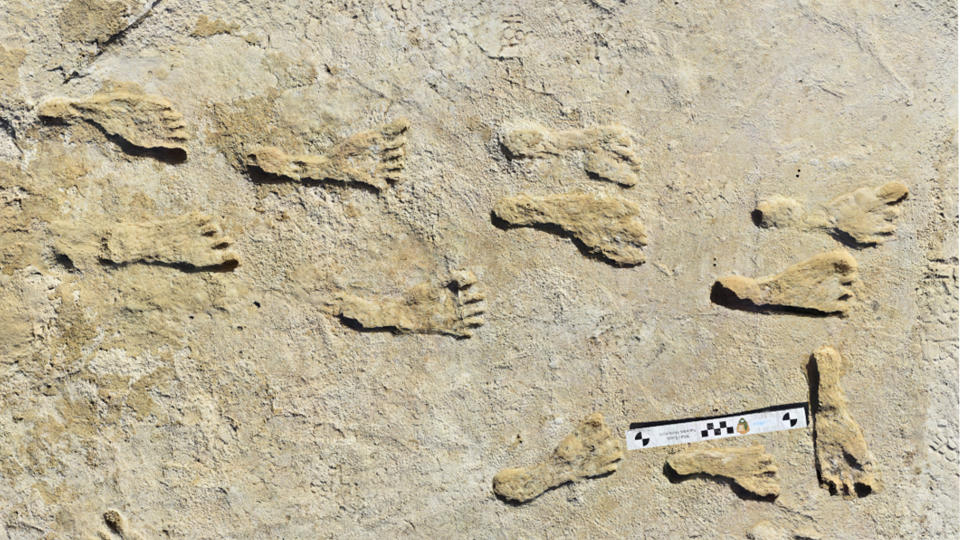
White Sands National Park,located in southern New Mexico, is the world's largest gypsum dunefield. It contains some of the earliest "unequivocal evidence" of people in the Americas in the form of 23,000-to-21,000-year-old footprints.
These footprints are still visible thanks to a megadrought that lowered the water levels of an ancient and now dried-up lake called Lake Otero, exposing swampy ground that preserved tracks left by humans and animals. The archaeological site contains 61 human tracks, mostly from teenagers and children.
8. Meadowcroft rock shelters, Pennsylvania
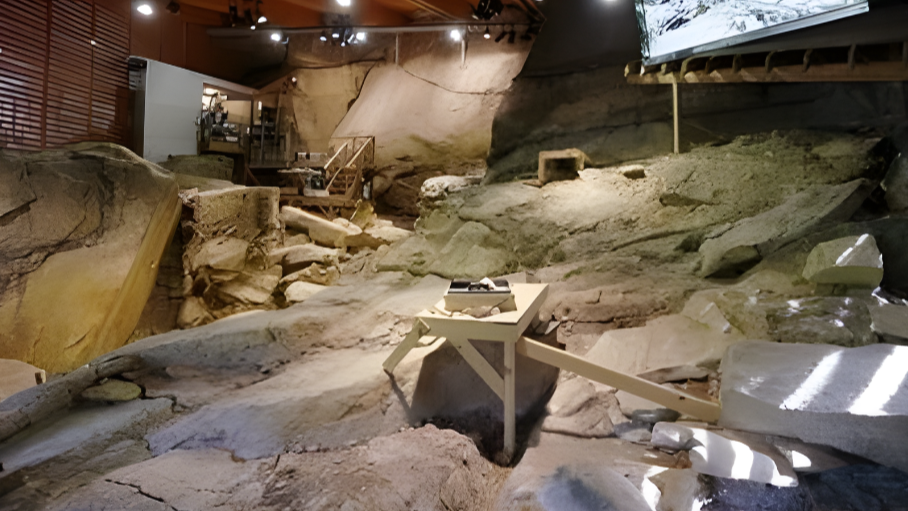
The Meadowcroft rock shelters are a National Historic Landmark, located in southwestern Pennsylvania, that contain evidence of human occupation dating to 16,000 years ago.
The site was first discovered in 1955 by a farmer, who found a flint knife, flint flakes and burnt bones in a groundhog hole. Archaeologists didn't excavate Meadowcroft until the 1970s, when they uncovered a wide array of human artifacts, including stone tools, spearpoints and wooden instruments.
Meadowcroft sits atop a yellow sandstone mountain and features a massive rock overhang carved out by the flowing waters of nearby Cross Creek. While being close to this vital source of fresh water, the site would have also kept its early occupants safe from flooding.
9. Debra L. Friedkin Site
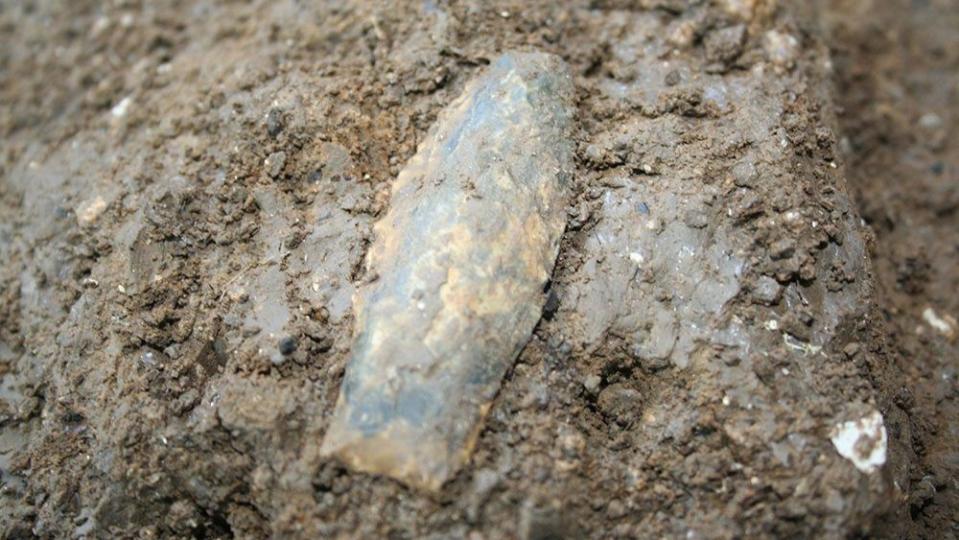
Located about 40 miles (64 kilometers) northwest of Austin, Texas, the Debra L. Friedkin archaeological site held weapons and tools possibly dating to 15,500 years ago.
Archaeologists have unearthed 100,000 artifacts from the site, which sits just north of Buttermilk Creek. These items include blades, scrapers and a circular core from which stone utensils were struck. They also found thousands of chert pieces — scraps and flakes created during tool production — that are at least 13,500 years old.
Some claims about the site are controversial, notably regarding the discovery of 11 spearpoints that archaeologists have estimated could be 15,500 years old. Some experts have raised doubts about the methods used in a 2018 study, which employed optically stimulated luminescence instead of radiocarbon-dating techniques.
10. Bluefish Caves, Canada
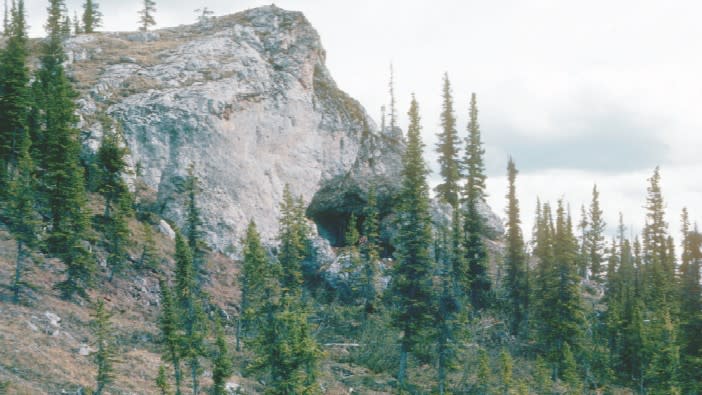
The Bluefish Caves are a network of three small cavities overlooking the Bluefish River in Canada's northern Yukon Territory. The site was first discovered during an air survey in 1975, and a 10-year-long excavation project began in 1977.
Archaeologists discovered a small number of tools and 36,000 mammal bones — including from mammoths and extinct horses — some of which bear cut marks and have since been dated to 24,000 years ago. Some experts remain skeptical of those results, as well as of those from a 2021 study that dated several long-debated flakes and fragments of mammoth bone to 28,000 years ago.
11. Cueva del Chiquihuite, Mexico
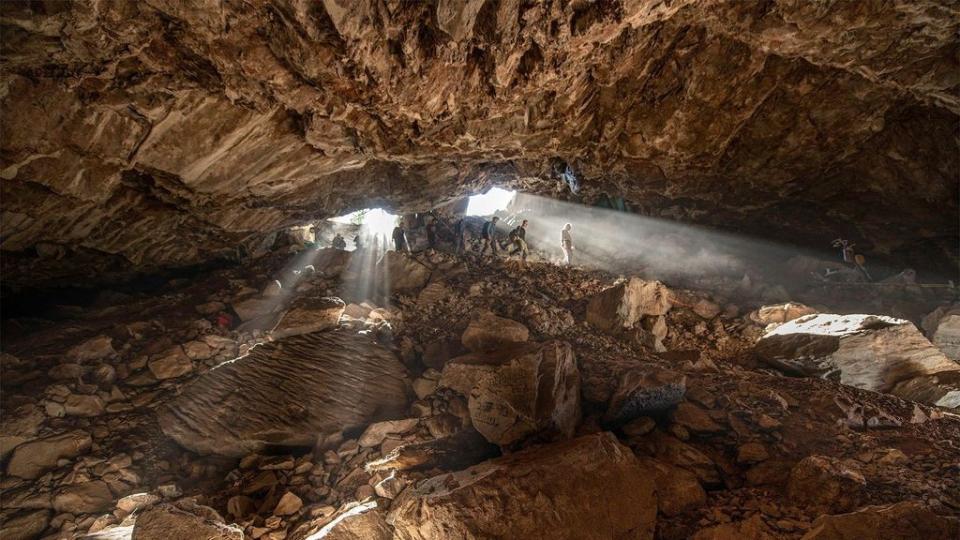
The Cueva del Chiquihuite, or Chiquihuite Cave, is situated in the desert mountains of north-central Mexico and contains evidence suggesting there were people in North America as early as 31,500 years ago.
A 2020 study describes thousands of stone fragments, tools and weapons that were found in the cave but were made of a type of limestone sourced elsewhere. Archaeologists also unearthed bits of charcoal dating as far back as 32,000 years ago, but they are unable to tell whether these were made by humans or in natural events.
Experts question the results linked to Chiquihuite Cave, with some arguing that the stone artifacts could have been created by natural processes. The cave also lacks evidence typically associated with human occupation, such as hearths and animal bones with cut marks. Traces of human DNA were found inside the cave, but experts suspect this could be contamination from modern humans.
12. Santa Elina Rock Shelter
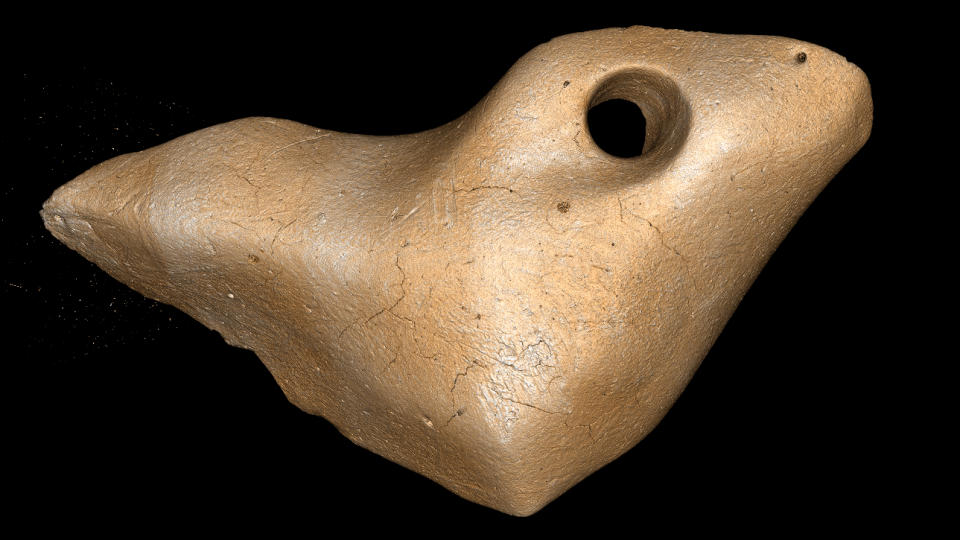
Located in the Mato Grosso state in central Brazil, the Santa Elina rock shelter has exposed unusual evidence of early humans: three pendants made from giant sloth bone.
The discovery places people in South America between 25,000 and 27,000 years ago, while earlier studies describing hundreds of stone artifacts and 1,000 examples of rock art indicated humans were there over 20,000 years ago.
The pendants are made of sloth osteoderms — bony deposits that form the protective armor over the skin of animals such as armadillos — and feature tiny, smooth holes likely drilled and polished by humans. While some experts argue that these holes could not have been created by natural processes, others maintain that the evidence isn't strong enough to prove that humans occupied the site so early.
13. Pedra Furada
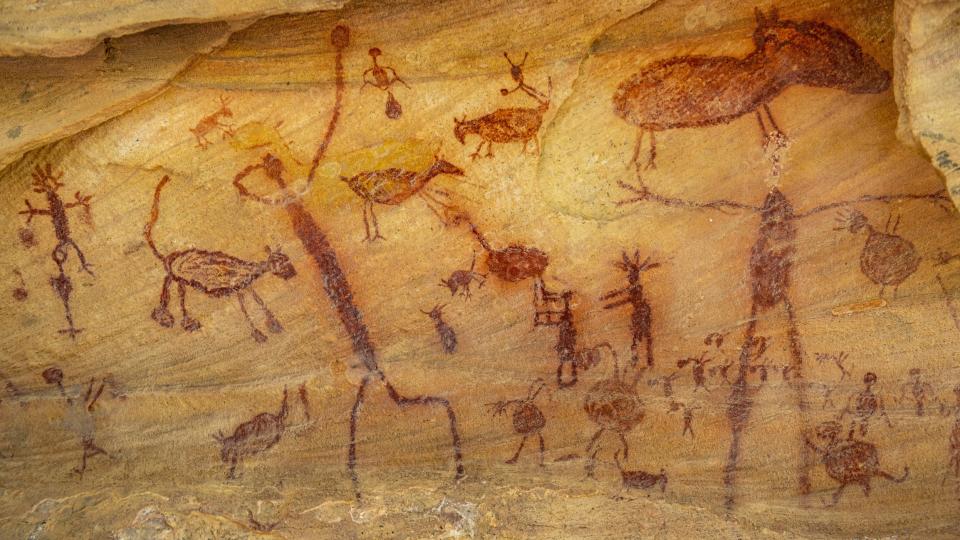
Pedra Furada — a large rock shelter located in Serra da Capivara National Park, in Brazil' Piauí state — is one of the most controversial archaeological sites in the Americas.
RELATED STORIES
—Some of the 1st ice age humans who ventured into Americas came from China, DNA study suggests
—The 1st American cowboys may have been enslaved Africans, DNA evidence suggests
—Oldest human-made structure in the Americas is older than the Egyptian pyramids
Excavations in the 1970s and 1980s uncovered stone artifacts and hearths that suggested the site was occupied by humans 32,000 years ago and even as far back as 50,000 years ago.
But a 2022 study found that capuchin monkeys living in the national park are capable of creating objects out of stone that closely resemble those found at Pedra Furada. This finding — combined with the lack of any other trace of human presence, such as hearths or food remains — suggests the site was not populated by humans until much later.

